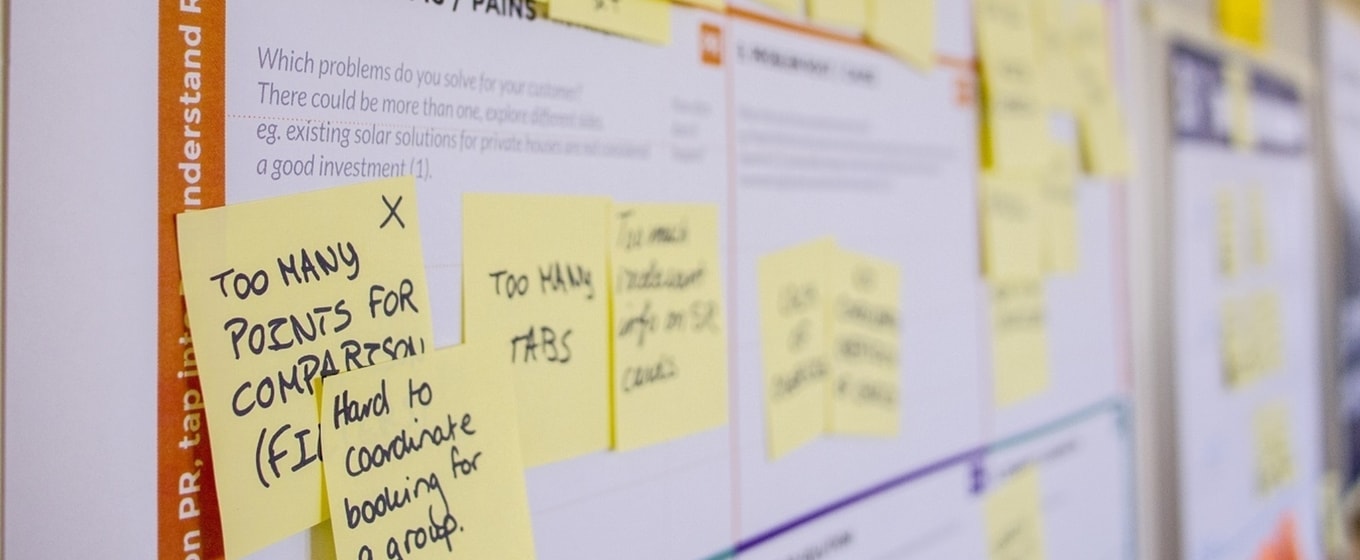For a long time, the Agile approach to managing projects has been more or less exclusive to software development. Over the years, however, it has started seeping into other industries and, today, at least according to the Project Management Institute, more than 70% of organisations report that they use the Agile approach for at least some of their projects.
In short, Agile project management has transcended a wide variety industries and has stopped being this weird thing that only software developers do.
But why did this happen and how can Agile improve your projects, regardless of your industry?
The basics of Agile
In order to understand why Agile has grown into different industries and how you can apply the concepts of Agile to your project management efforts, it is important to understand a few things about it.
Agile is a project management methodology characterized by small increments of work, proactive feedback gathering and a focus on team collaboration and accountability.
Agile, in the sense of the word we use today, was born in the software development industry, though a great deal of theory behind it can be traced to a legendary HBR article on the then revolutionary practices in product development.
In 2001, the Agile Manifesto was released; a formal statement by the leading proponents of new ways of developing software which would, from that point on, be called Agile. Together with the 12 Principles of Agile, it provided a good insight into the basic ideas behind the Agile methodology;
- Adaptation over excessive planning
- Constant communication (internal and external)
- Involvement of business people and external stakeholders
- Empowered, self-reflecting teams
- Simplicity
- Early working products
- Incremental and sustainable delivery
In combination with each other, and when applied properly, these ideas have provided the software development community with a better way to deliver quality software that provides more value for the customers and end users.
Going through these bullet points, you can probably already see how these might help you improve your projects, regardless of whether you work in software development or not.

By breaking projects down into smaller sub-tasks, Agile minimizes wasted time and money on unnecessary development and hones in on necessary updates
Emphasis on adaptation
In Agile, the amount of planning done for the product and its delivery is cut down to the bare bones; the minimum amount necessary to launch. This is the consequence of the software development industry being quite volatile in terms of ever-changing requirements and marketplace conditions.
While such an approach is not perfectly suited for certain industries (e.g. construction), it is always possible to introduce certain mechanisms and procedures that will improve the adaptability of your projects:
- Minimized increments of work
- Increased stakeholder participation
- Improved feedback gathering
- Reduced time from feedback to modification
- Introduction of Andon or Andon-like systems
Focusing on adaptation can result in a number of beneficial outcomes for your projects, such as reduced waste, easier (and cheaper) backtracking and products or services that will hold more value for the customer.
External communication
The traditional, pre-Agile software development process involved customers handing off a list of requirements to the developers who would then go on to develop a product as close to meeting those requirements as possible. Following a long and often erratic development process, this usually resulted in software that held little value for both the customer and the end users.
It does not take too much effort to imagine how such a process would (and does) take place in any other given industry.
Agile combats this by placing a strong emphasis on the continuous collaboration and communication between the people doing the work and the external stakeholders.
In Scrum (the most popular Agile framework), this is done by making stakeholder communication a part of the formal responsibilities of scrum masters and product owners, the roles that take over the traditional project manager’s responsibilities.
Scrum is an Agile framework that breaks down a project into sub tasks, each with a fixed time frame, called Sprints. Teams have regular meetings, or daily scrums, where they communicate progress with the product owner and other scrum teams.
Stakeholder collaboration is also promoted by the introduction of the sprint review, a prescribed Scrum event where the team demonstrates the work they had done and actively asks for stakeholder feedback.
We all know how difficult it can be to engage external stakeholders, but as Agile recognizes and emphasizes, it is one of the key ingredients for successful projects. It ensures everyone is on the same page and the team is not wasting time on something that the customer does not need or want.
Empowered teams and internal communication
One of the integral ideas of Agile is the paramount importance of having self-organized, empowered teams. In essence, Agile teams are provided with high levels of autonomy as to how they will take on and organize their work, in order to deliver value to the organization and the customer. Agile teams operate as units where individual performance is not scrutinized over and the entire team stands behind the results of their work.
Another very important characteristic of Agile teams is that they actively look for ways in which they can improve. Over and above productivity, this includes potential interpersonal issues, sharing of knowledge within the team, and other aspects of building a team.
A huge part of this is the internal communication, which should involve as much face-to-face communication as possible, avoiding email, phone, chat or any other communication channel. Of course, in distributed teams this can be difficult.
This emphasis on self-improvement is not exclusive to Agile teams and everyone likes to think they are doing enough to empower their project teams to grow. However, in Agile, this is done in a structured, more proactive way. This is especially true for Scrum teams. When it comes to staff development, taking a page out of Scrum’s book could definitely benefit any project team, regardless of the industry or the project in question.

Daily scrums are a great opportunity for teams to feedback and collaborate on their respective tasks
Early, incremental and sustainable delivery
Before Agile, software development was completed following a number of strictly containerized phases (requirement gathering, design, development, testing, etc.) which had to be completed before the next one could be started. A piece of software took months and years to go through these phases before it could be released, usually far less valuable than originally envisioned, for any number of reasons.
In Agile, teams aim to release an early working product and then build and refine it as new information appears which could influence the product. This also involves adding to the project in small increments, reducing the monetary or time investment if something needs to be changed or modified. Delivering the product should be also sustainable - meaning without significant drops or peaks in delivering the value to the customer.
Depending on your particular industry, you will know which of these are applicable. For example, if you are in the construction industry, you can’t put up four bare walls and a roof, let people move in and then continue working on the house.
That being said, in many industries, it is possible to divide work into smaller batches, reducing the risks and increasing the focus of the team. Also, adopting Agile’s proactive self-inspection of the work can help project teams become more stable in delivering work and estimating future efforts.
A few caveats
It’s important to point out that Agile should never be seen as some sort of a silver bullet that will solve every problem that your project might be experiencing. In fact, there are some projects that are better off without Agile (as we mentioned previously).
In addition to this, transformation to an Agile project management strategy requires a lot of effort and commitment on all levels of an organization. It requires a very specific way of looking at teams and how they perform as units.
In the end, however, a modern project manager should at least be familiar with the concept and the basic ideas of Agile. As we (hopefully) demonstrated, there is a lot to be gained.
About the Author
Jug Babic is a marketer at VivifyScrum, the company behind the eponymous project management tool. VivifyScrum helps teams using the Agile approach to manage their projects and deliver results. He has spent the better part of the decade in content marketing, focusing on the intersection of business and technology.






These cookies are set by a range of social media services that we have added to the site to enable you to share our content with your friends and networks. They are capable of tracking your browser across other sites and building up a profile of your interests. This may impact the content and messages you see on other websites you visit.
If you do not allow these cookies you may not be able to use or see these sharing tools.